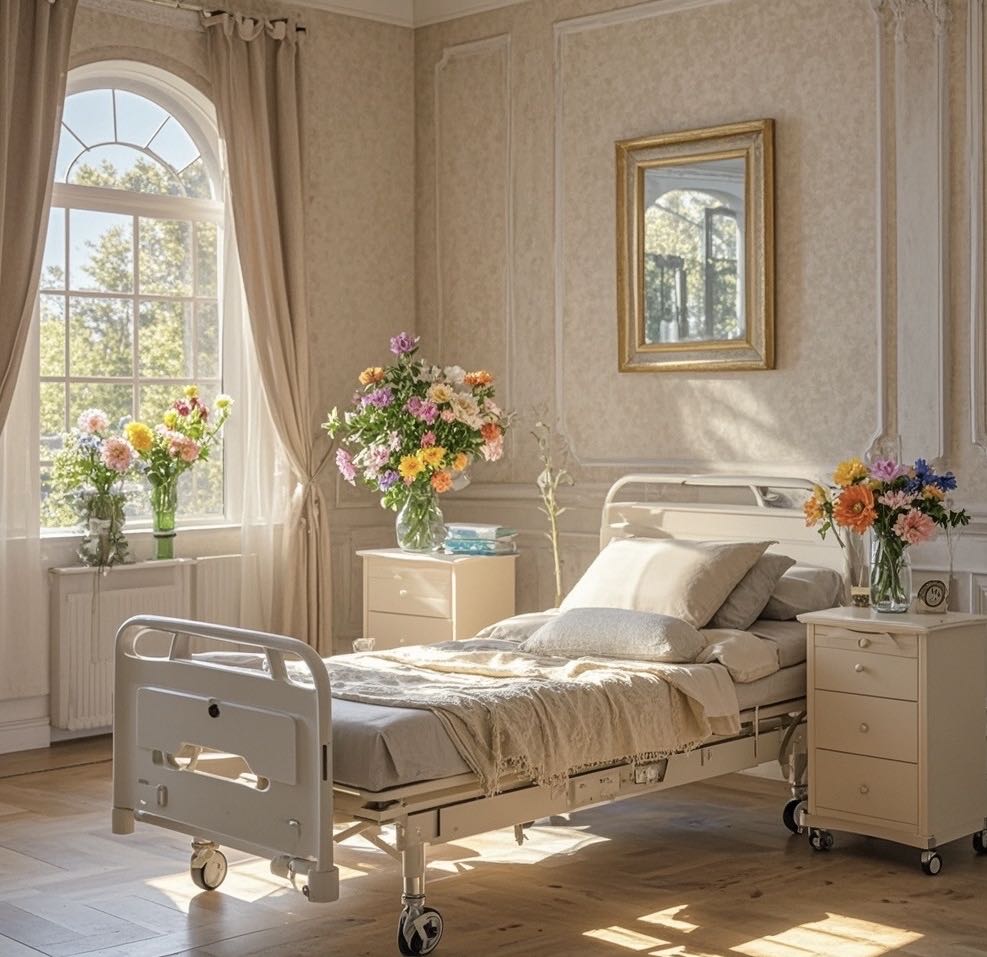Contents
Why Hospital Beds Are Made for One Patient Only
Why Sharing Hospital Beds Risks Patient Safety
Why Hospitals Ban Shared Beds: Safety First
Family Comfort in Hospitals: Emotional Care Beyond the Bed
Avoid Sharing Hospital Beds
FAQ
What are the primary reasons for a patient being in a hospital bed and how does this impact the possibility of sharing the bed with another person?
What medical devices and monitors are typically found on hospital beds and how could they be affected by the presence of a second person?
What guidelines and protocols do hospitals adhere to in order to ensure patient safety and comfort in regards to sleeping arrangements?
How do hospitals typically provide amenities for visitors to ensure emotional support without compromising physical care?
Introduction
The question of whether two people can sleep in a hospital bed is multifaceted and requires a nuanced understanding of various factors, including the design of hospital beds, the reasons for hospital stays, and the implications for patient care and comfort.
Why Hospital Beds Are Made for One Patient Only
Hospital beds are specifically designed to accommodate one patient, providing necessary support and adjustments to ensure comfort and facilitate medical care. These beds usually feature mechanisms that allow them to be raised, lowered, and tilted to assist with patient mobility and medical procedures. They are typically equipped with side rails, which are essential for patient safety but can also limit the available space further. The standard dimensions of a hospital bed, which usually range around 36 inches in width and 80 inches in length, are not conducive to comfortably accommodating two people.
Why Sharing Hospital Beds Risks Patient Safety
From a medical perspective, the primary reason a patient is in a hospital bed is to receive treatment and care, often necessitating a sterile and controlled environment. The presence of a second person in the same bed could compromise this environment, increasing the risk of infection and potentially hindering medical procedures. Additionally, hospital beds are equipped with various medical devices and monitors that are essential for patient care. The added weight and movement of a second person could disrupt these devices, potentially leading to inaccuracies in monitoring and complications in treatment.
Why Hospitals Ban Shared Beds: Safety First
Moreover, hospitals adhere to strict guidelines and protocols to ensure patient safety and comfort. Allowing two people to sleep in a single hospital bed would likely violate these protocols and could lead to liability issues for the healthcare facility. Hospitals are designed with specific spaces for visitors, such as chairs and couches, to ensure that patients can receive support from loved ones without compromising their care.
Family Comfort in Hospitals: Emotional Care Beyond the Bed
There are also psychological and emotional factors to consider. While the presence of a loved one can provide immense comfort to a patient, the physical discomfort of sharing a small, medically equipped bed could negate these benefits. Hospitals often encourage family members to stay close, offering amenities such as reclining chairs or nearby accommodations to ensure that patients have the emotional support they need without compromising their physical care.
Avoid Sharing Hospital Beds
In summary, while the idea of sharing a hospital bed might stem from a desire for closeness and support, it is not practical or advisable from a medical, logistical, or safety standpoint. Hospitals are equipped to ensure that patients receive the highest standard of care, and this includes providing appropriate sleeping arrangements for both patients and their visitors.
FAQ
What are the primary reasons for a patient being in a hospital bed and how does this impact the possibility of sharing the bed with another person?
The primary reason a patient is in a hospital bed is to receive treatment and care in a controlled and sterile environment. Sharing the bed with another person could compromise this environment, increasing the risk of infection and hindering medical procedures.
What medical devices and monitors are typically found on hospital beds and how could they be affected by the presence of a second person?
Hospital beds are often equipped with various medical devices and monitors essential for patient care. The presence of a second person could disrupt these devices, potentially leading to inaccuracies in monitoring and complications in treatment.
What guidelines and protocols do hospitals adhere to in order to ensure patient safety and comfort in regards to sleeping arrangements?
Hospitals follow strict guidelines and protocols designed to ensure patient safety and comfort. These protocols typically include providing hospital beds for single-patient use and offering separate accommodations for visitors to prevent any compromise in care.
How do hospitals typically provide amenities for visitors to ensure emotional support without compromising physical care?
Hospitals offer amenities such as reclining chairs, couches, and nearby accommodations to ensure that visitors can provide emotional support to patients without compromising their physical care.


